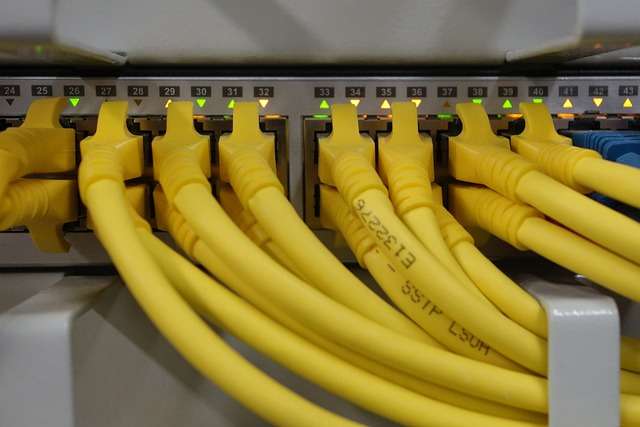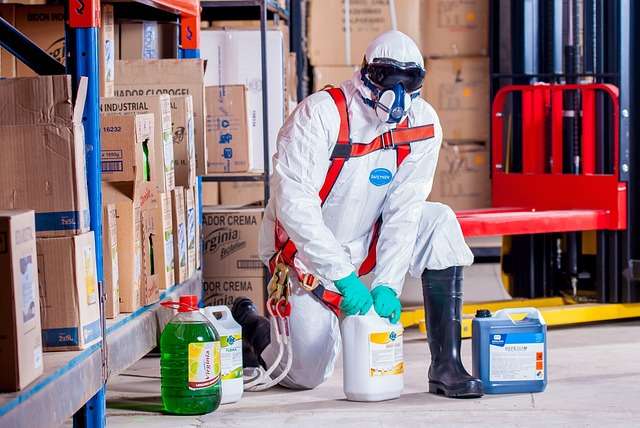ISO 14001 Certification
You can apply for an audit of your EMS according to the current standard ISO 14001:2015. Our audit teams audit locally in most jurisdictions around the world. The ISO 14001 auditors inspect your Environmental Management System in several languages. Apply now for an ISO 14001 Certification! Is your main business location is in USA, Europe, Africa or Asia? Certification audits are possible in many regions.
ISO 14001 Certification Areas
Within the ISO 14000 Standard is the main core standard 14001. Once your EMS has a substantial maturity, you should consider achieving additional certifications by introducing quality management systems (ISO 9001) or an information security system (ISO 27001).
QMS: Reliable products and services required processes and policies that drive quality control and continuous improvement.
ISMS: Implement a management system to protect the data in your company with a ceetified information security
Environmental Protection
EMS: Protecting the environment is so important as it can destroy nature and risk the health of local communities.
What is ISO 14001?
The international Standards Organisation (short: ISO) introduced the ISO 14001 standard in order to help organisations set up and operate an environmental management system (EMS). Such environmental processes may include packaging processes, new product development, research, manufacturing, customer support and delivery.
The ISO 14001:2015 standard has following structure:
- Clause 0: Introduction,
- Clause 1: Scope,
- Clause 2: References,
- Clause 3: Terms and Definitions
- Clause 4: Context of the organization
- Clause 5: Leadership and commitment
- Clause 6: Planning for the EMS
- Clause 7: Support & resource management
- Clause 8: Operational planning and control
- Clause 9: Performance evaluation
- Clause 10: Improvement actions

Why can an ISO 14001 certification be beneficial to you?
When you want to achieve ISO 14001 certification, you need to introduce a variety of policies and procedures to your organisation. All these items need to be documented in your Environmental management system (EMS). All relevant processes need to be written down and staff made aware of them. The way these procedures are writing is very important. If the complexity is to an extend that the staff being part of such procedure will not understand why things have to be done in a certain way. The correct steps of performing a certain task have to be observed in order to prevent injuries and pollution. It takes several months for an organisational to follow the the EMS processes. As time progresses EMS typically display a greater level of maturity. Once the certification audit is successfully completed, the ISO 14001 certificate will show to outsiders following positive aspects:
- Greater reduction of wasted output and material
- Regular improvements of safety record
- Greater trustworthiness and better ESG rates
- Greater reliability and stability
- Lower risk to staff and the environment
Furthermore, an organisation also experiences following inner improvements:
- Compliance with legal requirements
- improved internal processes and efficiency
- qualifying for tenders and longterm contracts
- increased ability to gain business overseas
- fewer import / export restrictions
- faster cashflow due to higher demand
- Improved credibility and trust
What is required for ISO 14001:2015 certification?
The ISO 14001:2015 standard requires following items to be compliant within the EMS documentation in order to issue a certificate:
- Scope of the EMS (clause 4.3)
- Environmental policy (clause 5.2)
- Quality objectives (clause 6.2)
- Risk and Opportunities to be Addressed and Processes Needed (clause 6.1.1)
- Criteria for evaluation of Significant Environmental Aspects (clause 6.1.2)
- Environmental Aspects with Associated Environmental Impacts (clause 6.1.2)
- Significant Environmental Aspects (clause 6.1.2)
- Compliance Obligations Document (clause 6.1.3)
- Environmental Objectives and Plans for Achieving Them (clause 6.2)
- Operational Control (clause 8.1)
- Emergency Preparedness and Response (clause 8.2)
- Records of Training, Skills, Experience and Qualifications (clause 7.2)
- Evidence of Communication (clause 7.4)
- Monitoring and Measurement Results (clause 9.1.1)
- Evidence of the Compliance Evaluation Result(s) (clause 9.1.2)
- Internal Audit Program (clause 9.2)
- Results of Internal Audits (clause 9.2)
- Results of the Management Review (clause 9.3)
- Results of Corrective Actions (clause 10.2)
Which documents are not mandatory for a EMS audit?
The following documents are not mandatory, unless the organization’s nature makes it necessary to have them in place:
- Procedure for Determining Context of the Organization and Interested Parties (clauses 4.1 and 4.2)
- Procedure for Identification and Evaluation of Environmental Aspects and Risks (clauses 6.1.1 and 6.1.2)
- Competence, Training and Awareness procedure (clauses 7.2 and 7.3)
- Procedure for Communication (clause 7.4)
- Procedure for Document and Record control (clause 7.5)
- Procedure for Internal Audit (clause 9.2)
- Procedure for Management Review (clause 9.3)
- Procedure for Management of Nonconformities and Corrective actions (clause 10.2)
How will the audit plan be influenced by the statement of applicability?
Our audit teams follow an audit plan which takes your organisation’s specific industry sector and business model into consideration. The compliance of your EMS will be reviewed in relation to the different chapters and parts of the respective Annex. In order to conduct a proper audit, it is necessary for the audit client to name staff members, who can answer questions in relation to parts of the audit plan. An organisation must review regularly its statement of applicability (SoA), in order to decide which controls are necessary. Auditors will will review the SoA and question in particular controls that have been stated as not applicable. The controls marked as applicablewill also be inspected but in a different way.
How much will the audit and ISO 14001:2015 certification cost?
The cost of an ISO 14001:2015 certification process is dependent on the size and risk profile of the organisation. The IAF MD 5 Standard document provides an average number of audit days for an organisation of average risk and certain number of included staff. Our audit estimators evaluate the to be expected audit time in relation to company specific parameters. Some factors allow for a reduction of audit duration and thereby positively reducing the audit costs.
Where risks require additional depth of audit activities, the audit plan will have to allocate extra time for it. This increases the audit time and the audit related costs. In addition if auditors have to travel to the client’s operational locations, the client organisation will incur additional travel expenses. The ISO standard allows for up to 30% of the audit to be conducted as remote audit. If the company structure (home office) or the situation (e.g. pandemic) required a 100% remote audit, the certification body is required to gain consent from the respective accreditation body. Remote audits avoid travel costs and are usually ideal for “virtual organisations” (e.g. 100% home office based teams).
| Number of persons doing work under the organization’s control | EMS audit time for initial audit (auditor days) |
|---|---|
| 1~5 | 2,5 |
| 6-10 | 3 |
| 11-15 | 3,5 |
| 16-25 | 4,5 |
| 26-45 | 5,5 |
Above table is based on the IAF MD 5 document (Annex B, Table EMS 1).
FAQ for ISO 14001 Certification
The cost of your ISO 14001 certification will be quotedbased on organization size and risk profile. The offer will contain a fixed fee basis and the estimated audit days. This will allow you to better budget your certification project.
The cost of certification will depend on:
- your organisation’s total size
- the sector you operate in
- the number of locations you operate from and their particular activities
- your organisation risk profile
You will be assigned an account manager who coordinates the first stage of your journey towards the ISO 14001 certificate. This person will get you a fixed fee quote and gather the key details of your desired scertification scope.
The lead auditor will then arrange with you a 1-2 hour call to check that all aspects of your sik profile have been considered and that the audit plan structure matches the availability of the key people in your organization.
Once you have completed the audit, the account manager will keep you updated while the audit documentation is being processed by the compliance team in the certification body. After a positive review the ISO 9001 certificate will be issued to you.
We will also help you understand how to best use the certificate and associated logos, in order to avoid conflicts with the ISO rules.
Stratlane's accreditationis a key part of the assurance we can guarantee those who trust you by trusting your certificate.
Our accredited ISO 14001 certificates include not only your logo but also the logo of the accreditation body and respective accreditation associations.
Let's Get Your Company Certified!
Make use of our certification services so that your businesss gains the competitive advantage of having accredited ISO certifications.


